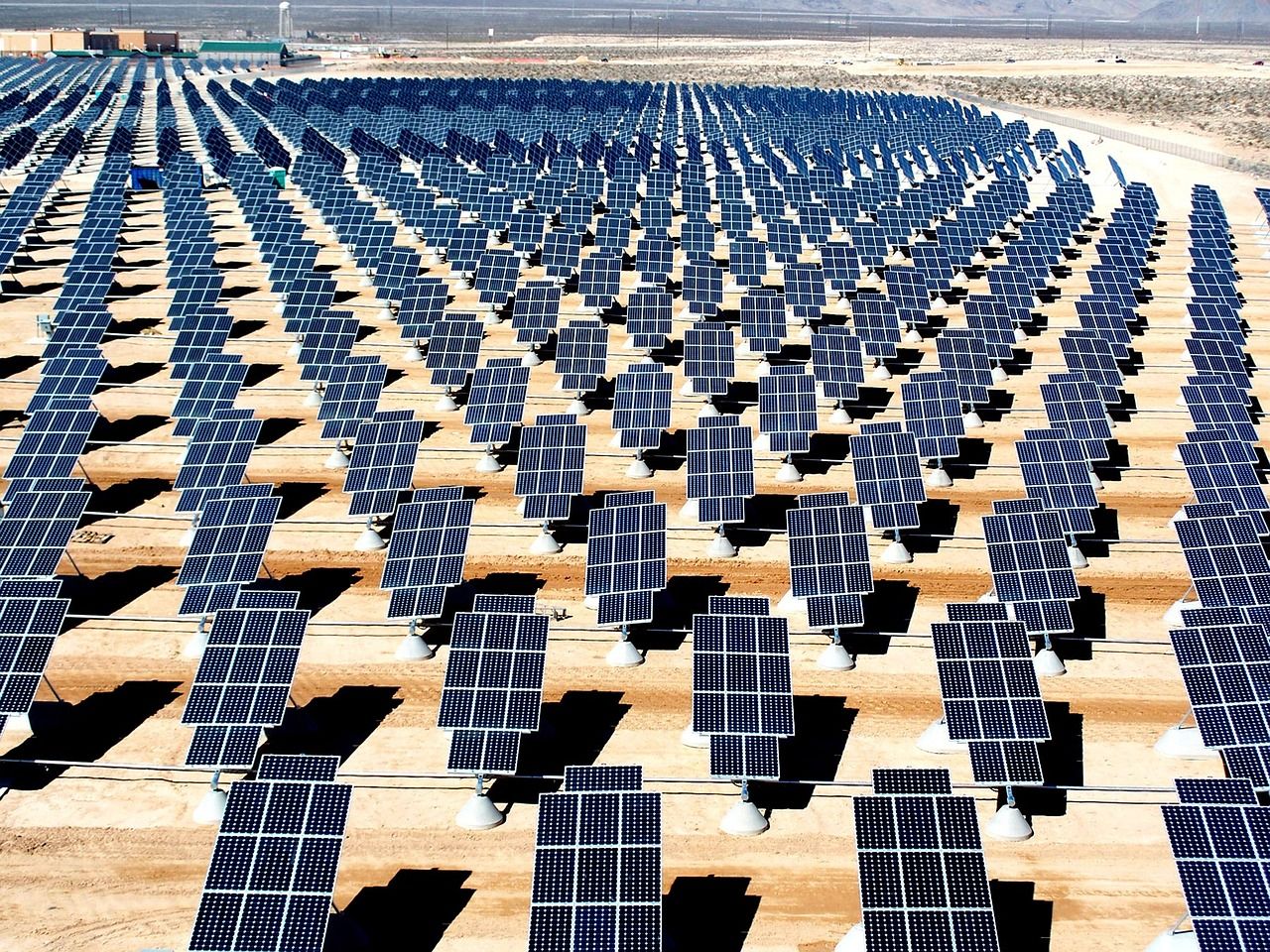
Solar installed capacity 2022
Solar is a major form of renewable power generation, and while the growth in installed capacity is not where it needs to be, solar has not slowed down as much as some commentators feared.
Summary: As the world rebounded from the COVID19 pandemic concerns about GHG emissions from increased activity abounded. However despite growth in emissions from some fossil fuel power generation, the growth in renewables has largely offset. Solar is a major form of renewable power generation, and while the growth in installed capacity is not where it needs to be, solar has not slowed down as much as some commentators feared.
Why this is important: While all renewables are important, solar is especially so. Its likely to be the renewable technology of choice across much of the world, especially in the tropics - mostly because of its low cost. Yes, it cannot carry the load on its own. In many countries wind will be important, either as a complementary source, or in the higher latitudes, as the core technology. But, its clear, if solar falters the whole renewable shift is at risk.
The big theme: The global energy crisis, combined with the push to net zero, is leading to an acceleration of renewables installations. It is expected that together wind and solar will make up c. 95% of global renewable capacity additions over the next 5 years, with solar contributing an increasing share. By 2030, the two combined could contribute 30% of total generation, up from only just over 10% now. This acceleration in renewable installations is going to bring challenges, in supply chains, in (massive) grid investment, and potentially, in the dependence this exposes on China. These are all nice challenges to have, but one we need to be honest about and start to solve.

The details
As the world rebounded from the COVID19 pandemic concerns about GHG emissions from increased activity abounded. However despite growth in emissions from some fossil fuel power generation, the growth in renewables has largely offset. Solar is a major form of renewable power generation.
In this quick insight we take a look at what we know about 2022 installed solar capacity for selected countries.
What is Solar PV?
Solar PV (photovoltaic) is a technology that converts sunlight into electricity using solar cells made of semiconductor materials. These solar cells are typically made of silicon and are designed to absorb photons from sunlight, which in turn creates a flow of electrons, generating electricity.
Because they need sunlight to generate electricity they are, by their nature intermittent, i.e. they don't generate electricity all of the time. In addition, if there is no demand for electricity at the time they generate it, then that electricity is lost unless it can be stored somewhere like a battery. That loss is referred to as curtailment. We shall be discussing in a future blog.
What's the backdrop?
New IEA analysis shows global CO2e emissions rose by less than 1% in 2022 as a surge in clean energy offset most of the increase in emissions from oil and coal.
The rise in global CO2 emissions in 2022 would have been nearly 3 times as high if it wasn't for the strong growth of solar, wind, EVs, heat pumps & energy efficiency. Together, they prevented 550 million tonnes of emissions.
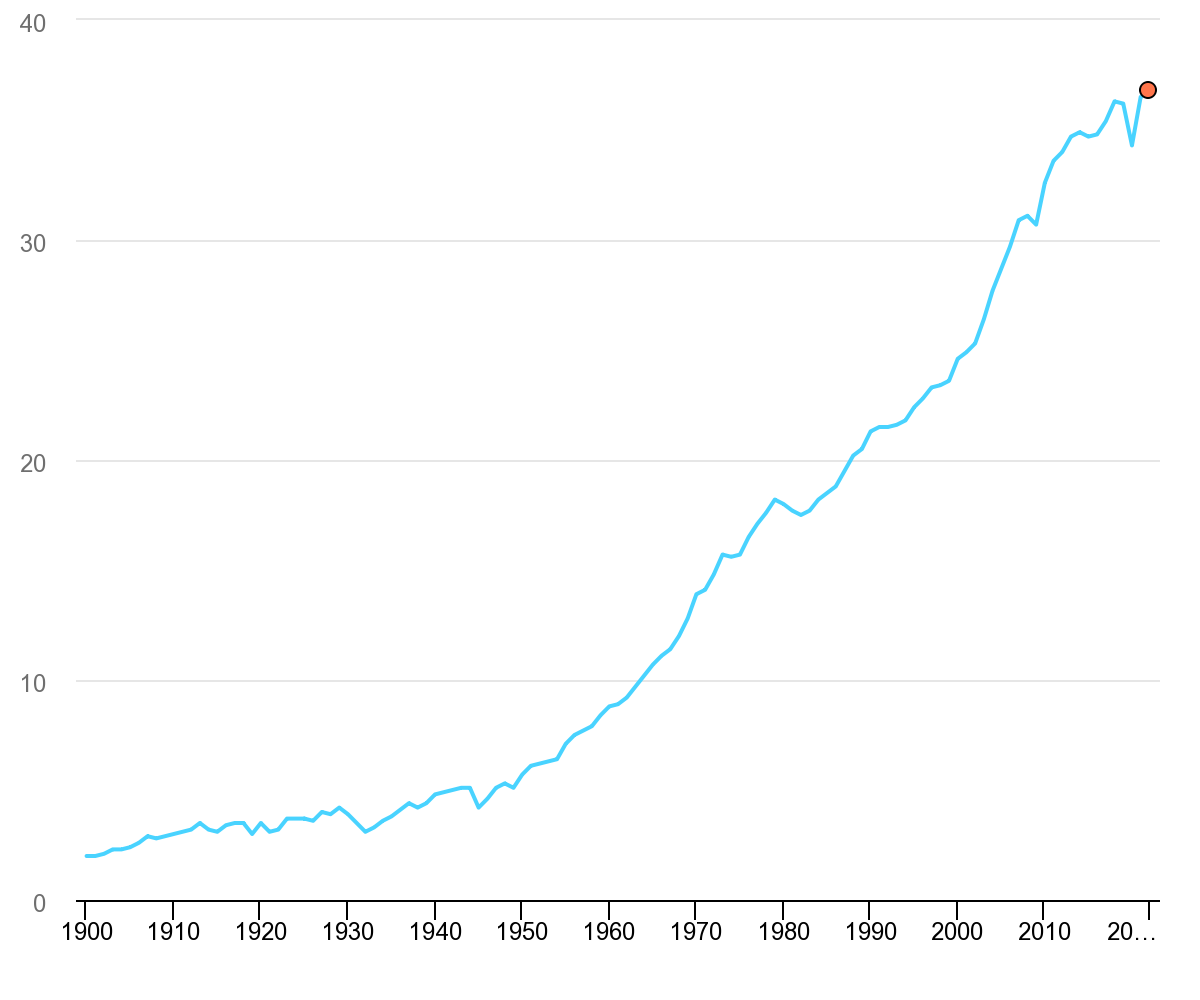
So even as growth has returned post pandemic lockdowns and even with disruptions from the conflict in Ukraine, renewables (including solar) have provided a pathway for transitioning to a lower GHG emissions future. However, it is clear that we have further to go to start to reverse the emissions trend.
The IEA are forecasting that by 2027 there will be global installed solar PV capacity of approximately 1,500 GW. Given the intermittent generation nature of solar it will be part of a broader portfolio of generating assets and storage solutions to manage loads both on a short term and long term basis.
How big is 1,500 GW of capacity? It would be the equivalent of almost 20 times the UK's total generating capacity across all forms (fossil fuel, renewable, nuclear etc) in 2021.
How much installed solar PV capacity is there?
Globally installed solar PV capacity has been growing at a cumulative average growth rate of 21.4 percent from 2017 reaching 848 GW by the end of 2021.
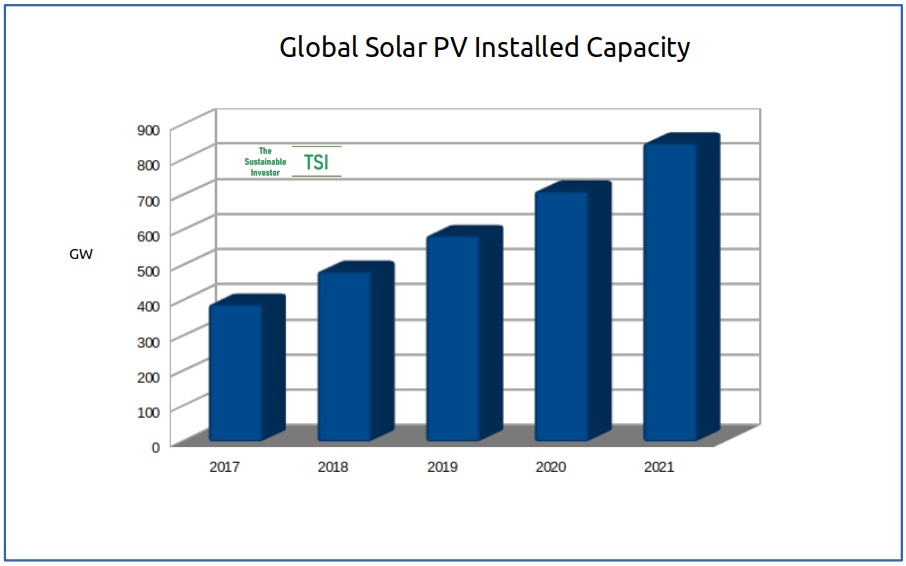
We wrote back at the end of 2022 that while there were concerns at the start of 2022 about solar, 2022 was looking like being a boom year.
Link to blog 👇🏾
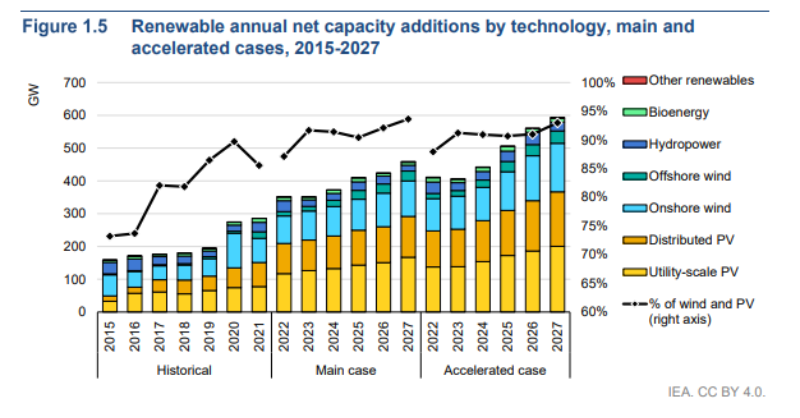
So what do we know about 2022 so far? Here are some selected charts - China, USA, Germany, India and the UK. Their combined installed solar PV capacity in 2021 was just over 500 GW and rose to almost 650 GW in 2022.
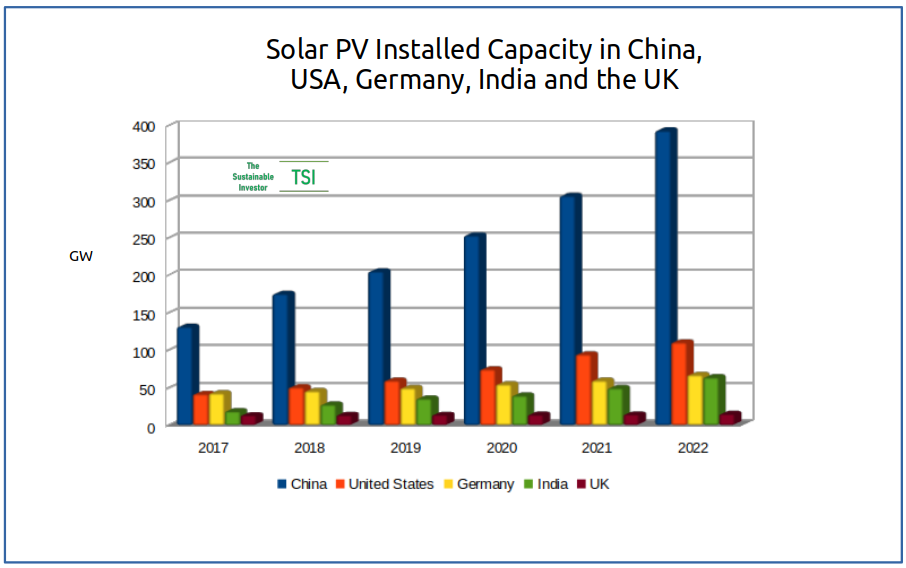
As you can see, China has the biggest installed capacity by some margin. Let's take a closer look at each country:
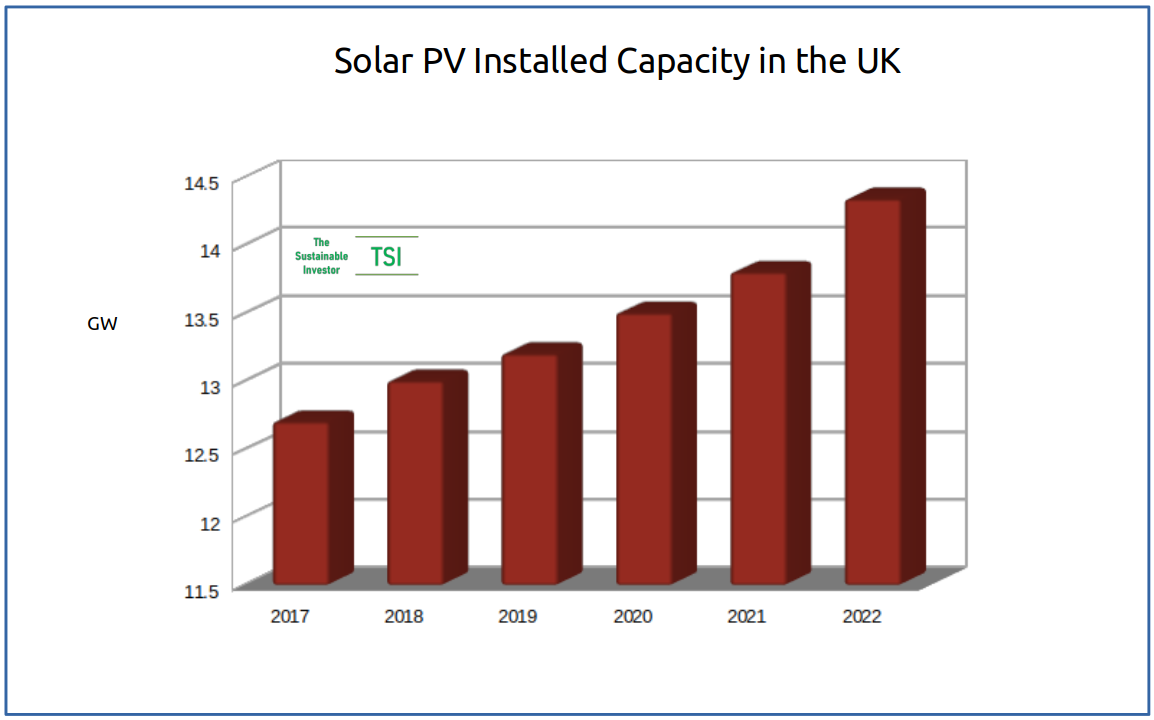
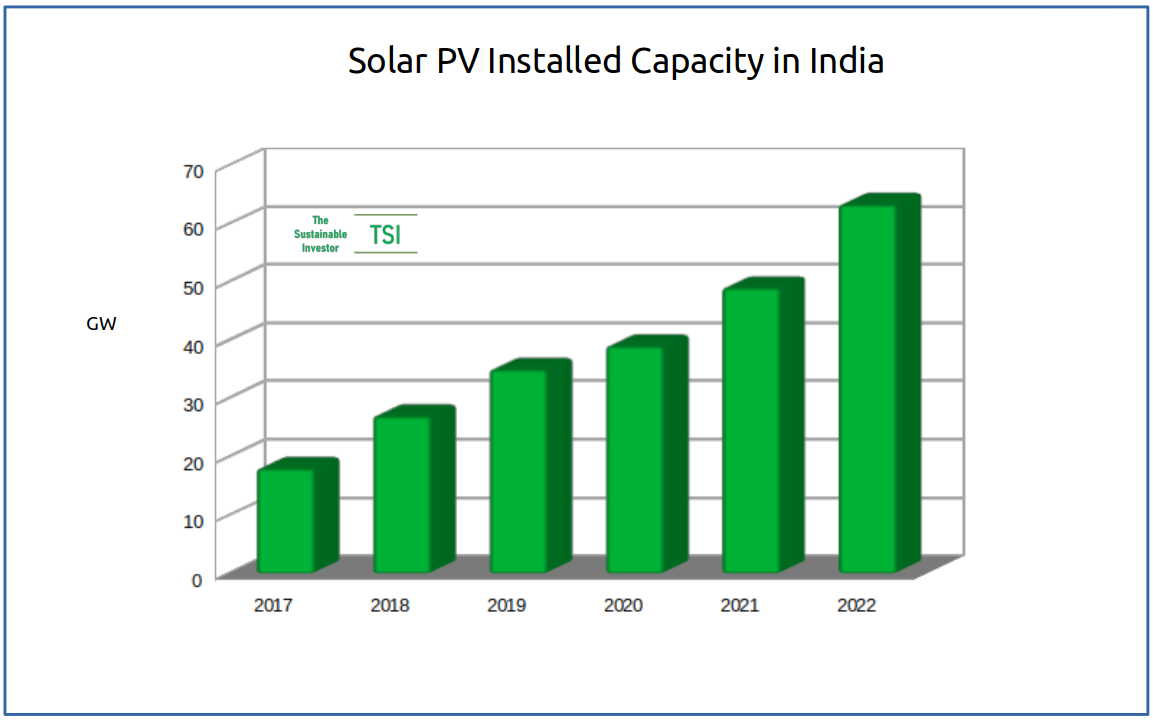
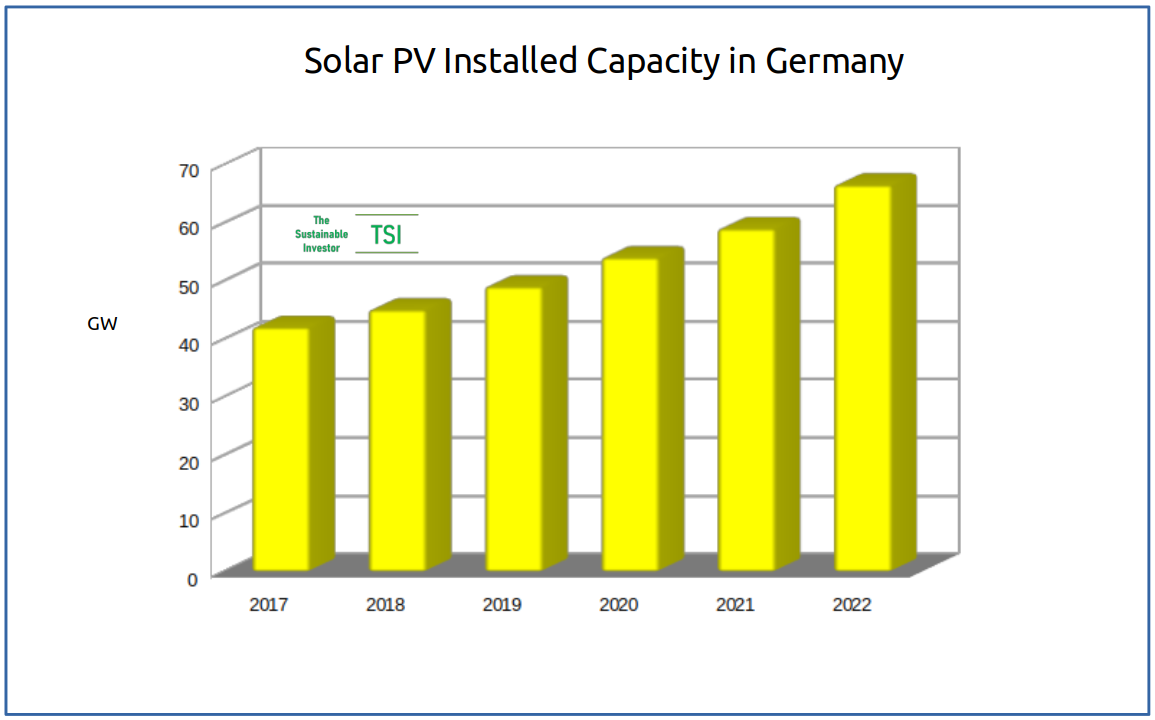
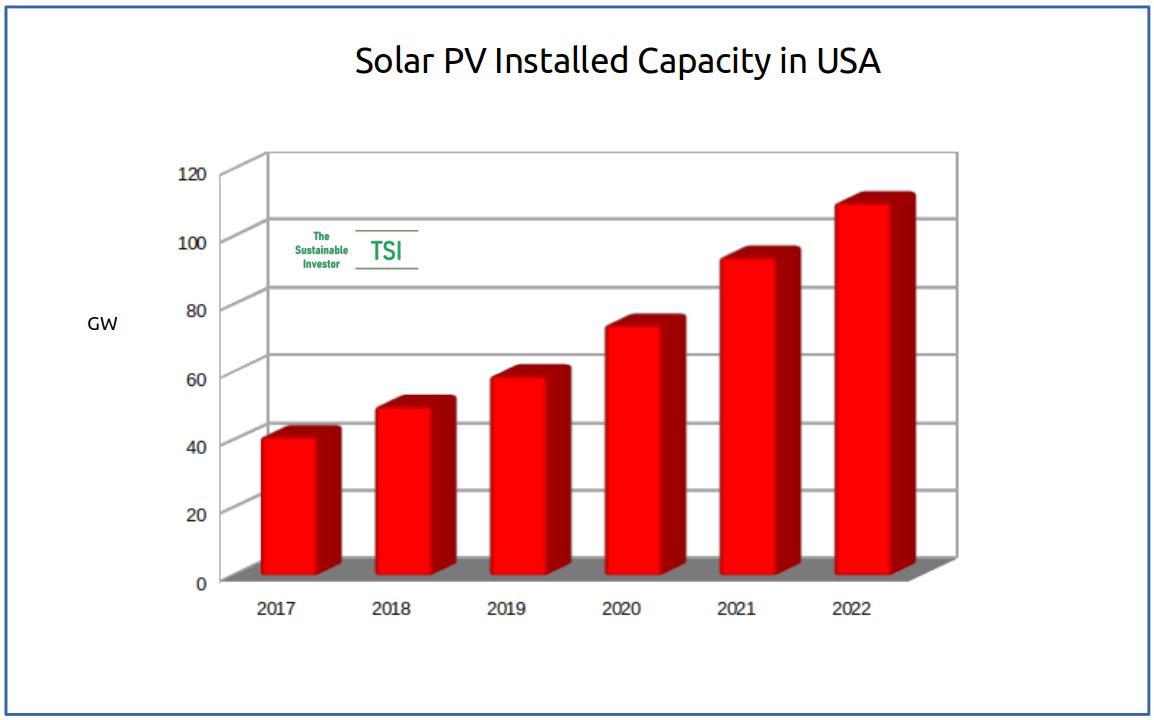
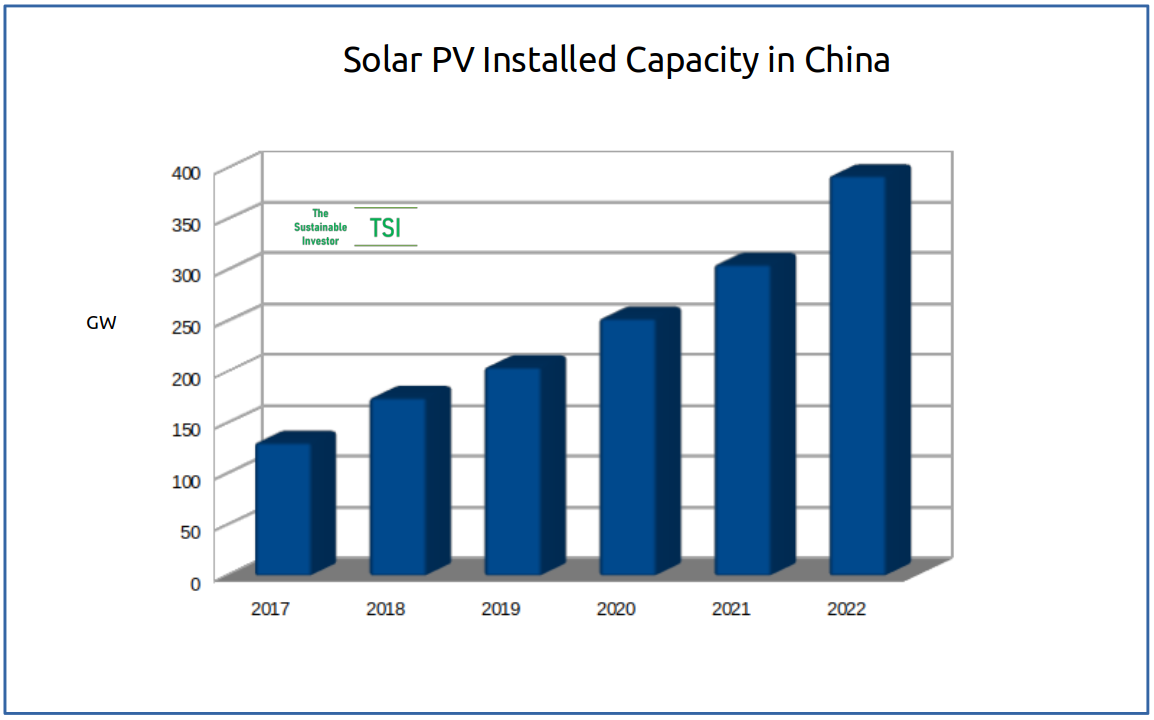
(Source: IRENA, NEA, EIA, BSW Solar, CEA, UK Gov; The Sustainable Investor)
The rest of the world still has a long way to go to catch up with solar generation in China. But in a way that's an encouraging sign, as they have shown it can be done. What do the rest of us need to do to start to catch up? A more streamlined planning process, combined with more co-ordination on how we connect the new solar generation to the grid would be a good start. And of course... storage.
More to come on that in a future blog
Something a little more bespoke?
Get in touch if there is a particular topic you would like us to write on. Just for you.
Contact us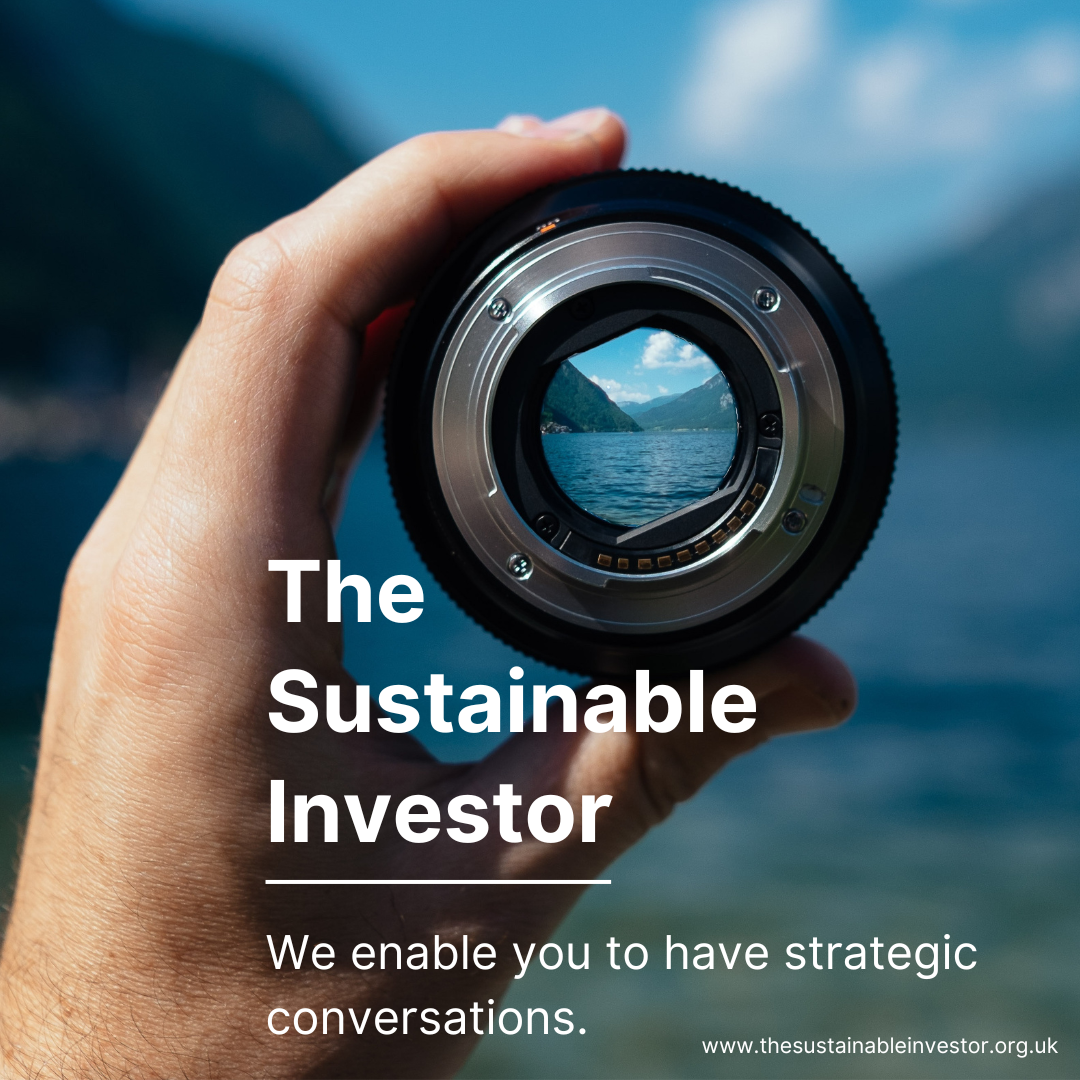
Please read: important legal stuff.


